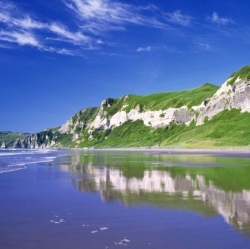
Deluge, droughts, rising sea levels, and shrinking water tables; these are the things of nightmare for farmers and agricultural scientists alike. That’s because they know something that most of us don’t think about: the world’s demand for food is set to increase by two-thirds by mid-century.
And while the impacts of that heightened demand might not be immediately felt by the citizens of food-fat world powers, the farmers of already struggling countries are shaking in their boots. That’s because for countries along the African coasts and in the Middle East, their farmland already boasts declining yields year-by-year.
Nature World News has reported in the past about some of the causes of this alarming trend. A study published just last July in Environmental Research Letters details how East Africa is heavily reliant on irrigation to grow crops, but is still extremely deprived of adequate irrigation systems compared to the rest of the world.
In fact, the study of sub-Saharan Africa revealed that only about four percent of cultivated land is irrigated. The global average, for comparison, is 18 percent. What’s worse, climatologists are speculating that this same part of the world is due for a dangerous shift in precipitation patterns, becoming even more arid and water-deprived than it already is. Meanwhile, in parts of the Middle East, their characteristically dry landscapes are becoming more parched than ever before.
That’s because, as populations and urbanization increases in these areas, the ground water table is being drained faster than yearly rainfall can refill it. The situation is worst for Iran, which is losing so much water that its iconic Great-Lake-sized bodies of water – once home to party boats and great flocks of flamingos – are now nothing but muddy puddles. This is in part because Middle-Eastern agriculture needs extensive irrigation as well to keep their farms alive
However, there is one alternative the UNU international team mentioned that is gaining a great deal of unlikely support: the halophyte revolution. Statistics show that at least an estimated 97 percent of water on Earth contains high concentrations of salt. This locks away a great deal of our plants’ most vital resource for survival and renders a great deal of coastal land unsuitable for farming.
And yet you are likely well aware that the ocean and its coasts boast their own kind of plants. That’s because of the over 400,000 plant species in the world, a select 0.7 percent are called "halophytes," meaning salt-loving.
